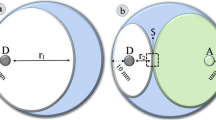Abstract
The influence of boron in CCB preservative on infestation of leached and non-leached CCB treated wood specimens by copper tolerant and copper sensitive brown rot decay fungi are described. The tests were performed according the EN 113 procedure using seven different brown rot fungal strains: (Antrodia vaillantii (four different strains), Poria monticola, Gloeophyllum trabeum and Leucogyrophana pinastri). Leaching of boron from the CCB-treated wood samples rendered them susceptible to decay by the copper tolerant strains but not the copper sensitive ones. Additionally, using EPR spectroscopy, non-toxic copper oxalate was found in samples exposed to the copper tolerant strains (A. vaillantii and L. pinastri), as well as the copper sensitive strain P. monticola but not in the samples exposed to the other copper sensitive strain G. trabeum. It is supposed that, in the case of samples that were not leached before exposure to the copper tolerant fungi fungal growth and decay were inhibited by boron.
Zusammenfassung
Der Einfluss des Bors in CCB-Schutzmitteln auf den Befall von ausgelaugten und nicht-ausgelaugten, mit CCB behandelten Holzproben durch Kupfer-tolerierende und Kupfer-sensitive Braunfäulepilze wird beschrieben. Die Prüfung erfolgte nach EN 113 mit sieben unterschiedlichen Pilzstämmen: (Antrodia vaillantii (vier unterschiedliche Stämme), Poria monticola, Gloeophyllum trabeum und Leucogyrophana pinastri). Auslaugen des Bors aus den mit CCB behandelten Proben machte diese anfällig für den Abbau durch Kupfer-tolerante Stämme, nicht jedoch durch Kupfer-sensitive. Mit Hilfe der EPR-Spektroskopie wurde außerdem nicht-toxisches Kupferoxalat in den Proben gefunden, die Kupfer-toleranten Pilzen ausgesetzt waren (A. vaillantii und L. pinastri) und auch einem Kupfer-sensitiven (P. monticola), nicht jedoch dem anderen Kupfer-sensitiven G. trabeum. Es ist daher anzunehmen, dass die Pilzhemmung bei Proben, die ohne Auslaugung des Bors den Kupfer-toleranten Stämmen ausgesetzt werden, durch Bor bewirkt wird.

Similar content being viewed by others
References
European Committee for Standardization (1989) Wood preservatives; determination of the toxic values against wood destroying basidiomycetes cultured an agar medium. EN 113. Brussels 14
European Committee for Standardization (1994) Wood preservatives—Accelerated ageing of treated wood prior to biological testing—Leaching procedure. EN 84. Brussels 16
Green F, Larsen MJ, Winandy JE, Highley TL (1991) Role of oxalic acid in incipient brown-rot decay. Material Organ 26:191–213
Humar M, Petrič M, Pohleven F (2001) Changes of pH of impregnated wood during exposure to wood-rotting fungi. Holz Roh- Werkstoff 59:288–293
Humar M, Petrič M, Pohleven F, Šentjurc M, Kalan P (2002) Changes of copper EPR spectra during exposure to wood rotting fungi. Holzforschung 56:229–238
Humar M, Pohleven F, Šentjurc M (2003) Effect of oxalic, acetic acid and ammonia on leaching of Cr and Cu from preserved wood. Wood Sci Technol 37:10–20
Peylo A, Willeitner H (1996) Probleme mit Bor bei der Aussenverwendung. Holz-Zentralblatt 122:15, 232
Peylo A (1995) Auswaschung von Boraten aus chemisch geschütztem Holz. PhD Dissertation, Hamburg
Pohleven F, Malnarič A, Humar M, Tavzes Č (2001) Copper tolerance of various Antrodia vaillantii isolates. IRG/WP 01-10406, p 8
Pohleven F, Humar M, Amartey S, Benedik J (2002) Tolerance of wood decay fungi to commercial copper based wood preservatives. IRG/WP 02-30291, p 12
Richardson HW (1997) Handbook of copper compounds and applications. Marcel Dekker, New York, pp 93–122
Raspor P, Smole-Možina S, Podjavoršek J, Pohleven F, Gogala N, Nekrep FV Rogelj I, Hacin J. (1995) ZIM: zbirka industrijskih mikroorganizmov. Katalog biokultur; Biotehniška fakulteta, Katedra za biotehnologijo, Ljubljana, p 98
Schmidt CJ, Whitten BK, Nicholas DD (1981) A proposed role for oxalic acid in non-enzymatic wood decay by brown-rot fungi. Proc Am Wood Preserv Assoc 77:157–164
Sharp RF (1975) The interactions of fungi, wood preservative and wood. The movement of copper by hyphae as observed with a model technique, Wood Sci Technol 9:99–111
Stephan I, Leithoff H, Peek RD (1996) Microbial conversion of wood treated with salt preservatives. Material Organ 30:179–199
Tsunoda K, Nagashima K, Takahashi M (1997) High tolerance of wood-destroying brown-rot fungi to copper-based fungicides. Material Organ 31:31–44
Acknowledgements
The authors would like to thank Biffaward, Protimsolignum-Osmose, Arch Timber Protection and CSI Timber Protection for financial support.
Author information
Authors and Affiliations
Corresponding author
Rights and permissions
About this article
Cite this article
Humar, M., Pohleven, F. & Amartey, S.A. Influence of boron in CCB formulation on growth and decay capabilities of copper tolerant fungi. Holz Roh Werkst 62, 177–180 (2004). https://doi.org/10.1007/s00107-004-0488-8
Published:
Issue Date:
DOI: https://doi.org/10.1007/s00107-004-0488-8




